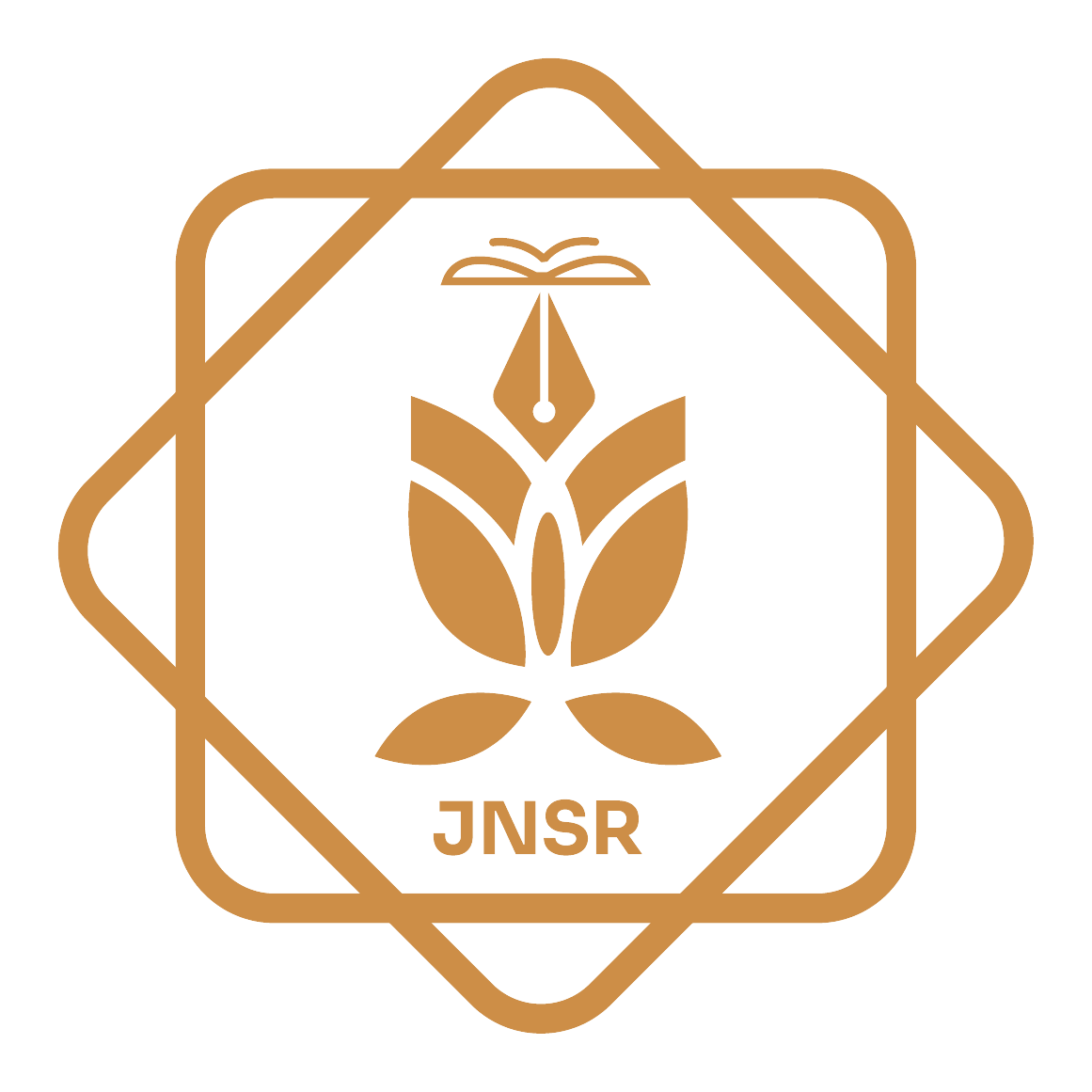Bacteriological Evaluation of Drinking Water Quality from Kabul University Taps
DOI:
https://doi.org/10.62810/jnsr.v2i3.45Keywords:
Drinking water, Bacteriological evaluation, E. coli, Coliform bacteria, Kabul UniversityAbstract
Human health is significantly affected by poor-quality drinking water, and water-borne diseases are of the most significant concern. A wide variety of microorganisms contaminate drinking water. Water consumers face substantial challenges due to these pollutants and harmful bacteria. To evaluate the microbiological quality of drinking water samples from different places to identify and count Escherichia coli and Coliform bacteria, multiple tube fermentation technique tests (most likely 100 ml) were used. Bacteria were identified using their morphological, biochemical, and cultural characteristics. Sixty tap water samples were collected from different locations at Kabul University. Of these, 36 samples (60 %) were positive for E. coli and Coliform bacteria, and 24 (40 %) were negative. Girls’ and boys’ dormitories showed the highest bacterial contamination level among the multiple positive water samples collected from different locations. Thirty-one samples (86.1 %) of the water were contaminated with Coliform, and five (13.8 %) samples revealed contamination with E. coli. Therefore, it is suggested that all drinking water sources should plan and carry out regular bacteriological evaluations, water supply monitoring, regular treatment, and adequate sanitation.
Downloads
References
Aziz, A. M & Rahmatzai, A. (2024) Determination of Chemical Contaminants of Groundwater in District 17 of Kabul City, Journal of Natural Science Review Vol. 2, No. 2, 2024, 35-46 https://kujnsr.com e-ISSN: 3006-7804 DOI: https://doi.org/10.62810/jnsr.v2i2.47
Biswas, A. (1992a). Water for Third World Development: A Perspective from the South. Water Resources Development, 8(1), 3-9. https://doi.org/10.1080/07900629208722528 DOI: https://doi.org/10.1080/07900629208722528
Blanco, J., Blanco, M., Gonjalez, E. A., Blanco, J. E., Alonso, M. P., Garabal, J I., & Jansen, W H. (1993) Serotypes and colonization factor of enterotoxingenic E. coli isolation in various countries, European J, Epidemiology 9: 486-496 https://doi.org/10.1007/bf00209526 DOI: https://doi.org/10.1007/BF00209526
Bourne, P. (1982) Rural Water Supply and Health, Falkenmark, M. Ch 2, pp.35. Uppsala: Scandinavian Institute of African Studies. https://www.ircwash.org/resources/rural-water-supply-and-health-need-new-strategy-summary-papers-and-discussions-united
Cowan, S. T., & Steel. (1985) Manual for the identification of medical bacteria, 3rd Ed, Cambridge University press London. https://www.academia.edu/8106702/Cowan_and_Steels_manual_for_the_identification_of_medical_bacteria_COWAN_AND_STEELS_Manual_for_the_identification_of_medical_bacteria_THIRD_EDITION_EDITED_AND_REVISED_BY
Craun, G. F. (1978) Impact of the coliform standard on the transmission of disease, In Hendricks, C.W. (Ed) https://www.sciencedirect.com/science/article/abs/pii/0167701289900353
Ellen, B., Braun, H., Jennifer Best., Robert, J., Blodgett., Laura, B., Gil, D., & Clifford, H. (2014) Multiple-tube fermentation technique for members of the coliform group, standard methods committee, Thailand. https://phld.anamai.moph.go.th/th/cer-66/download?id=100580&mid=37790&mkey=m_document&lang=th&did=30967
Eqrar, M. N. (2008) Water supply and sanitation of Kabul basin, Coupling sustainable sanitation & groundwater protection symposium 14-17 October, Hannover, Germany, https://www.bgr.bund.de/EN/Themen/Wasser/Veranstaltungen/symp_sanitat-gwprotect/poster_eqrar_pdf.pdf?__blob=publicationFile&v=2
Hinrichsen, D., & Tacio. H., (2002) The coming freshwater crisis is already here, The linkages between population and water, Washington, DC: Woodrow Wilson International Center for Scholars. https://www.wilsoncenter.org/sites/default/files/media/documents/publication/popwawa2.pdf
Johnson, P. D., Goldberg, S. J., Mays, M. Z., & Dawson, B. V. (2003) Threshold of trichloroethylene contamination in drinking waters affecting fetal heart development in the rat, Environ Health Perspex. 111:289–292. https://doi.org/10.1289%2Fehp.5125 DOI: https://doi.org/10.1289/ehp.5125
Kulshreshtha, S. N. (1993) World Water Resources and Regional Vulnerability: Impact of Future Changes. RR-93-10, Int. Institute for Applied Systems Analysis, Laxenburg, Austria. https://es.ircwash.org/sites/default/files/Kulshreshtha-1993-World.pdf
Lewis, W. (1985) The Significance of Water Management in Relation to Public and Environmental Health, J . Appl. Bacteriol. Symposium Supplement. 1S-13S. https://doi.org/10.1111/j.1365-2672.1985.tb04886.x DOI: https://doi.org/10.1111/j.1365-2672.1985.tb04886.x
McHugh, M. L. (2013) Lessons and biostatics, The Chi-square test of the independence, school of health and human services, National University, California, USA , https://doi.org/10.11613/bm.2013.018 DOI: https://doi.org/10.11613/BM.2013.018
Merchant IA., & Packer RA., (1967) Veterinary Bacteriology and Virology, 7th Ed, the Iowa University Press, Ames, Iowa, USA. pp. 286-306. https://search.worldcat.org/title/Veterinary-bacteriology-and-virology/oclc/922159
Moe, C., Sobsey, M., Samsa, G., & Mesolo,V. (1991) Bacterial indicators of risk of diarrheal disease from drinking-water in the Philippines, Bulletin of the World Health Organization 69: 305. https://www.ncbi.nlm.nih.gov/pmc/articles/PMC2393099/
Motulsky Harvey (2007) Graph Pad prism version 5.0, statistics guide, graph Pad software inc. https://cdn.graphpad.com/faq/2/file/Prism_v5_Statistics_Guide.pdf
Radha, K., Dharmaraj., R., & K. Ranjitha, K. (2007) A comparative study on the physicochemical and bacterial analysis of drinking, bore well and sewage water in the three different places of Sivakasi, Journal of Environmental biology, v. 28, n. 1. https://www.researchgate.net/publication/6122077_A_comparative_study_on_the_physicochemical_and_bacterial_analysis_of_drinking_borewell_and_sewage_water_in_the_three_different_places_of_Sivakasi
Thakur, M., Negi, S., Kumar, A., Patil Kumar, A., & Sharma N. (2012) Prevalence and characterization of water contamination indicator bacteria with special reference to coliforms from drinking water supply in Solan city of Himachal Pradesh,” Biol Forum Int J; 4:85-9. https://www.researchtrend.net/bfij/biological_forum_4(1)_2012/17%20SHUSHILA%20NEGI.pdf
UNICEF (2008) Water quality, improving water quality, handbook, New York, https://www.unicef.org/media/91301/file/Handbook-Water-Quality.pdf
United Nations, U.N. (1989) Prospects of World Urbanization 1988. Department of International Economic and Social Affairs. Population Studies No. 112, New York. https://population.un.org/wup/Publications/Files/WUP2018-Report.pdf
World health organization. (2008) Guidelines for Drinking-water Quality, 3rd Ed,Volume 1, 2008, Geneva, pp. 2-7. https://www.who.int/publications/i/item/9789241547611
World Health Organization. (2011) Guidelines for Drinking-water Quality, 4th edition, Cover designed by WHO Graphics, Switzerland, https://reliefweb.int/report/world/guidelines-drinking-water-quality-fourth-edition?gad_source=1&gclid=EAIaIQobChMIovDCwMCwiAMV8lmRBR2imBHUEAAYASAAEgKsKfD_BwE
Downloads
Published
How to Cite
Issue
Section
License
Copyright (c) 2024 Sayed Arif Ahmadi, Associate Professor Mohammad Zahir Sakha, Manizha Rahimi

This work is licensed under a Creative Commons Attribution-NonCommercial 4.0 International License.












